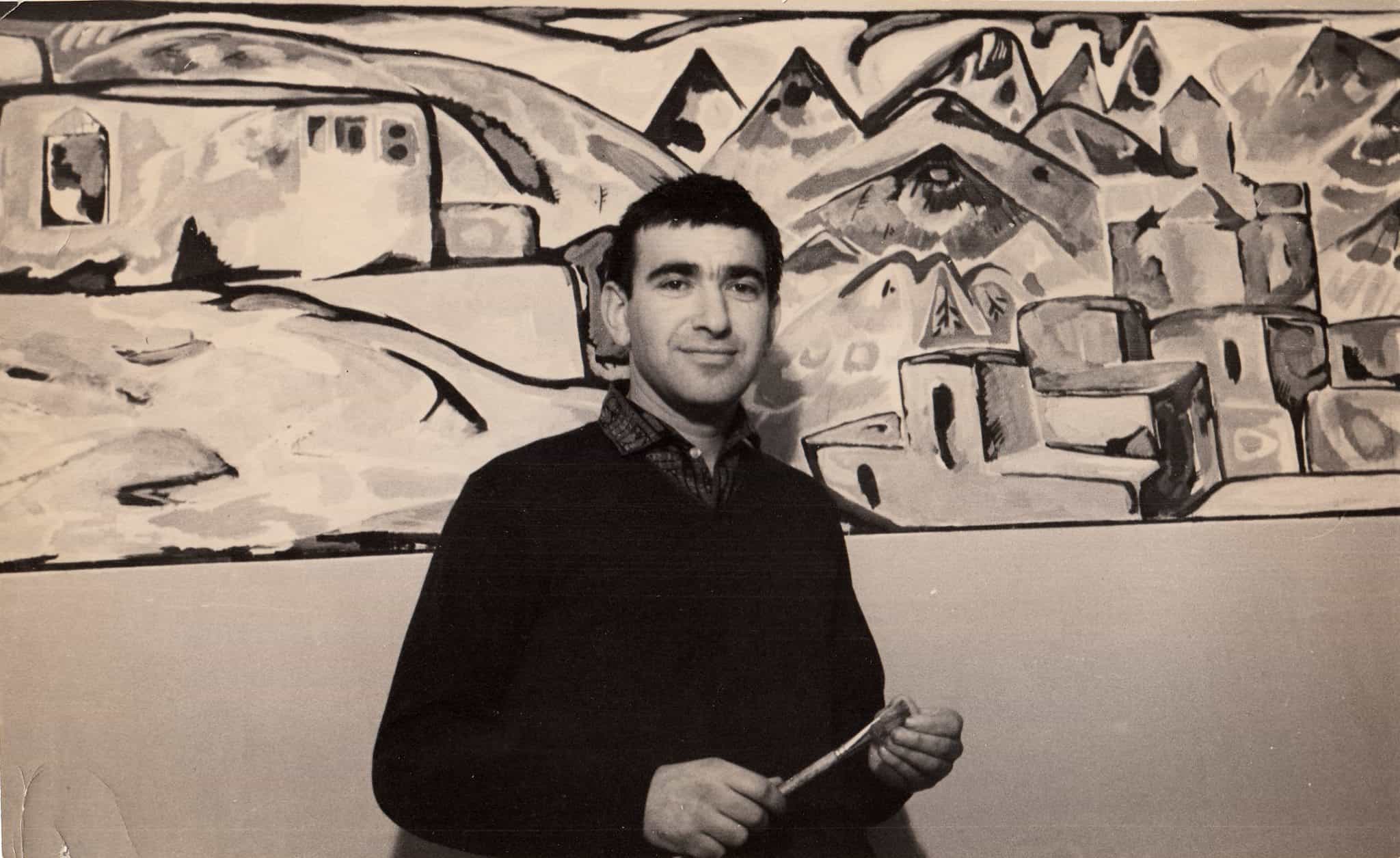Seiran Khatlamajian is considered one of the founding fathers of the abstract art movement in Armenia.
He was born on April 20, 1937, in the village of Chaltyr near Rostov-on-Don. His parents were dispossessed landowners. Since childhood, Seiran was fascinated by drawing and at the age of 14 started his studies at the children’s art school in Rostov-on-Don. He entered the Mitrofan Grekov School of Art in 1953 and graduated in 1959 with honors.
In the same year, he moved to Yerevan and enrolled in the Yerevan Fine Arts and Theater Institute (nowadays Yerevan Academia of Fine Arts), graduating in 1964. His student life in Yerevan was marked by his active involvement in social and cultural issues. In 1963-1965, he participated in many ethnographic expeditions throughout Armenia and painted landscapes in all its regions. public and professionals.
He became a member of the Painters Union of Armenia in 1967. He participated in solo and collective exhibitions in Armenia, Russia, Germany, France, Portugal, and the United States over the next three decades.
The young artist was initially influenced by Martiros Saryan, but then evolved into a non-figurative style. The works of Wassily Kandinsky and Arshile Gorky were the source of his artistic inspiration in his later years. Khatlamajian used a soft, transparent tone and lively and bright colors in his abstract style. He is also known for his series “Magic Armenia,” which is an artistic fusion of history and mythology, reality and mystery, paganism and Christianity.
Seiran Khatlamajian took active part in the public life in Armenia and was not limited to his role as artist. With his direct participation, Khatlamajian developed and adopted state symbols for the Republic of Armenia. He contributed to the restoration of the Armenian coat of arms originally used during the first independence of the Republic of Armenia.
He died on September 14, 1994, in Yerevan. Some of his paintings and drawings are exhibited at the Tretyakov Gallery (Moscow), the National Gallery of Armenia, the Contemporary Art Museum (Yerevan), the Museum of Oriental Cultures (Moscow), the Gnessins Music Institute (Moscow), Rostov Regional Museum of Local History, the Zimmerli Art Museum (Rutgers University, New Jersey), and in a number of state buildings in Armenia such as the Constitutional Court, National Assembly, and presidential residence. His work is also in many private collections in Armenia and abroad.

